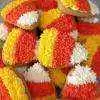-
Welcome to Celiac.com!
You have found your celiac tribe! Join us and ask questions in our forum, share your story, and connect with others.
-
Celiac.com Sponsor (A1):
Celiac.com Sponsor (A1-M):
-
Get Celiac.com Updates:Support Our Content
Son's Upcoming Blood Draw
-
Get Celiac.com Updates:Support Celiac.com:
-
Celiac.com Sponsor (A17):
Celiac.com Sponsor (A17):
Celiac.com Sponsors (A17-M):
-
Recent Activity
-
- xxnonamexx replied to xxnonamexx's topic in Post Diagnosis, Recovery & Treatment of Celiac Disease4
My journey is it gluten or fiber?
I read that as well but I saw the Certified Gluten free symbol that is the reason I ourchased it. -
- cristiana replied to sha1091a's topic in Celiac Disease Pre-Diagnosis, Testing & Symptoms2
Issues before diagnosis
I agree, it so often overlooked! I live in the UK and I have often wondered why doctors are so reluctant to at least exclude it - my thoughts are perhaps the particular tests are expensive for the NHS, so therefore saved for people with 'obvious' symptoms. I was diagnosed in 2013 and was told immediately that my parents, sibling and children should... -
- chrisinpa commented on Scott Adams's article in Skin Problems and Celiac Disease2
Celiac Disease and Skin Disorders: Exploring a Genetic Connection
Maybe they can attribute certain skin conditions to either being susceptible to getting Celiac......or the other way around....but I have to ask if certain people are prone to Celiac because of genetics and some people aren't. It's kind of the same thing as what came first.....the chicken or the egg.?- atopic dermatitis
- autoimmune diseases
- (and 8 more)
-
- knitty kitty replied to xxnonamexx's topic in Post Diagnosis, Recovery & Treatment of Celiac Disease4
My journey is it gluten or fiber?
@xxnonamexx, There's labeling on those Trubar gluten free high fiber protein bars that say: "Manufactured in a facility that also processes peanuts, milk, soy, fish, WHEAT, sesame, and other tree nuts." You may want to avoid products made in shared facilities. If you are trying to add more fiber to your diet to ease constipation, considering... -
- trents replied to sha1091a's topic in Celiac Disease Pre-Diagnosis, Testing & Symptoms2
Issues before diagnosis
Welcome to celiac.com @sha1091a! Your experience is a very common one. Celiac disease is one the most underdiagnosed and misdiagnosed medical conditions out there. The reasons are numerous. One key one is that its symptoms mimic so many other diseases. Another is ignorance on the part of the medical community with regard to the range of symptoms that celiac...
-







Recommended Posts
Archived
This topic is now archived and is closed to further replies.